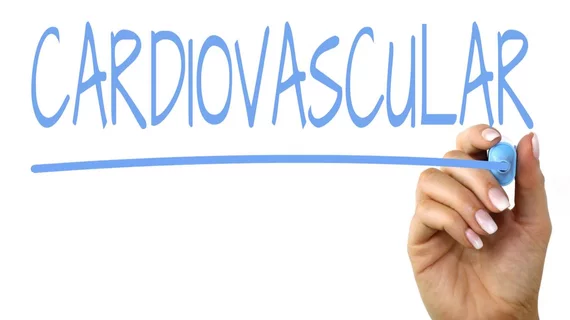A group of researchers from a Veterans Affairs health system in California shared their experience with limited left ventricular echocardiography, something they believe could reduce the cost and time required for testing in select patients.
Full echos at the hospital took an average of 37 minutes and included 66 images, while transthoracic echocardiography of only the left ventricle (LV-TTE) took an average of 12 minutes and included 16 images, lead author Alexander T. Sandhu, MD, MS, explained in an interview accompanying the paper in JAMA Internal Medicine. Sandhu said the limited echocardiography—which doesn’t use color or Doppler imaging—might be enough for patients with a low likelihood of valvular disease.
“We need to think about our diagnostic tests with what question we’re specifically trying to answer and if we can answer that diagnostic question with a simpler, less intense test that takes less time, there might be value in that,” Sandhu said.
The VA Palo Alto Health Care System added an LV-TTE option in 2006. Costs for both LV-TTE ($60) and full TTE ($240) were added to the electronic order option but no other incentives were introduced to influence the selection of either test.
The proportion of total TTEs that were LV-TTEs increased from 0.8 percent in 2005 to 19.5 percent between 2011 and 2015. The overall number of TTEs didn’t vary significantly over that span, staying around 4.5 per 100 patient visits.
“Less resource-intensive diagnostics can increase or decrease resource use, depending on whether they are used for patients who would not have been tested or as a substitute for more comprehensive testing,” Sandhu et al. wrote. “Our results suggest that the LV-TTE was substituted in place of a full TTE.”
Sandhu and colleagues pointed out Medicare spends more than $900 million per year on echocardiography and at least 5 to 20 percent of those tests are inappropriate. Since left ventricular function is a common indication for an echo, evaluating only that area may be enough in some cases.
“Because we facilitated a less-intensive option at the discretion of the ordering physician—without restricting full studies—we believe that adverse clinical effects were unlikely,” the researchers wrote. “However, further study is warranted given the potential implications of overlooking key findings.”
Additional hurdles to widespread implementation, Sandhu said, include building the LV-TTE test into the electronic medical record and educating clinicians about the availability of the option and when to use it. Also, further research could help elucidate the incremental value of the other parts of echocardiography, along with their impact on clinical outcomes.
In an editor’s note, Mitchell H. Katz, MD, pointed out the LV-TTE test could be especially useful in safety-net settings where resources are limited.
“Responsible use of resources means ordering needed tests, not more and not less,” wrote Katz, a deputy editor of JAMA Internal Medicine. “When a patient has a new murmur, a full echocardiogram is indicated. When the clinical need is assessing left ventricular function, Sandhu and colleagues demonstrate the feasibility of fulfilling that need, nothing more and nothing less.”

